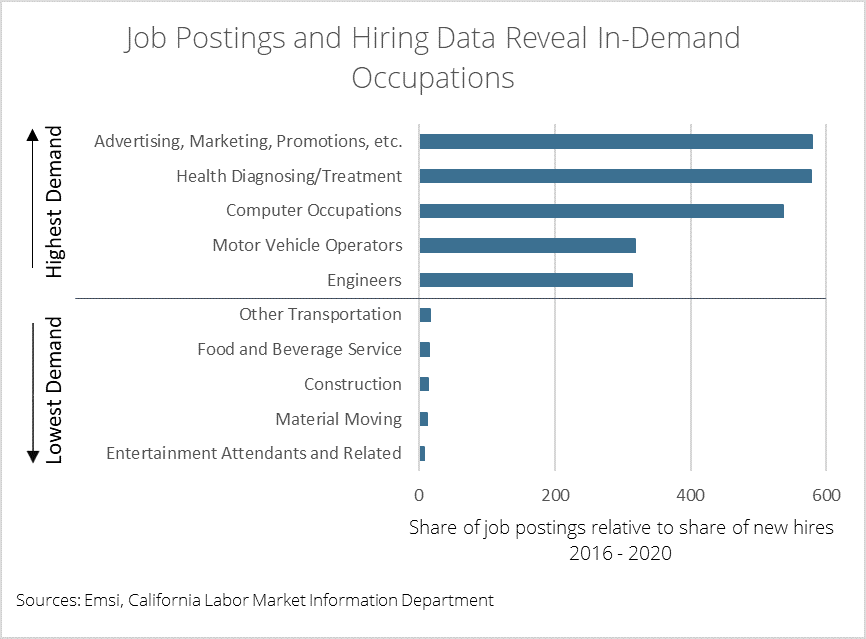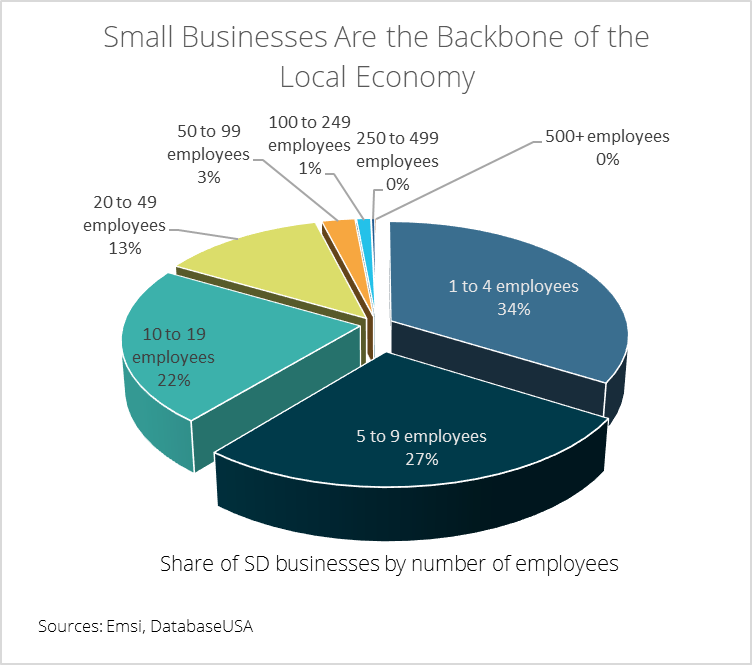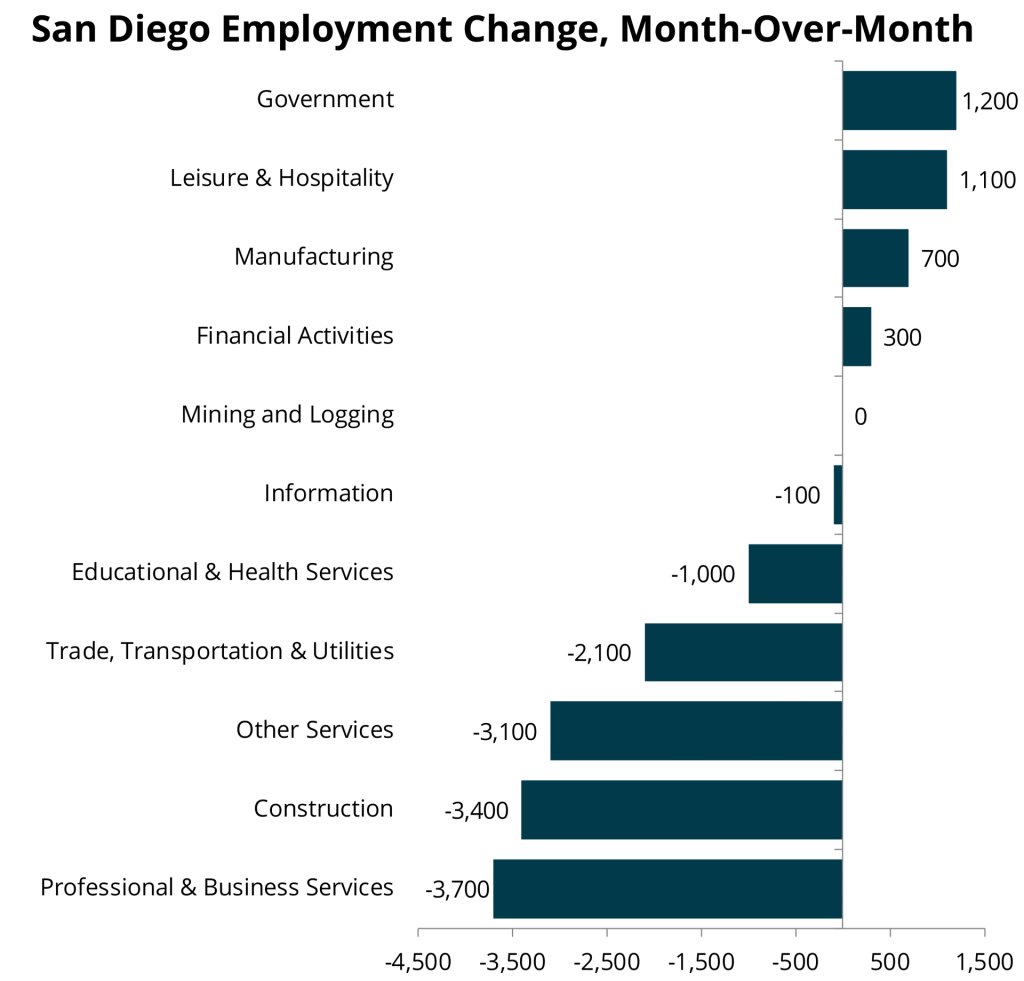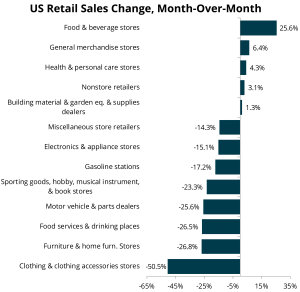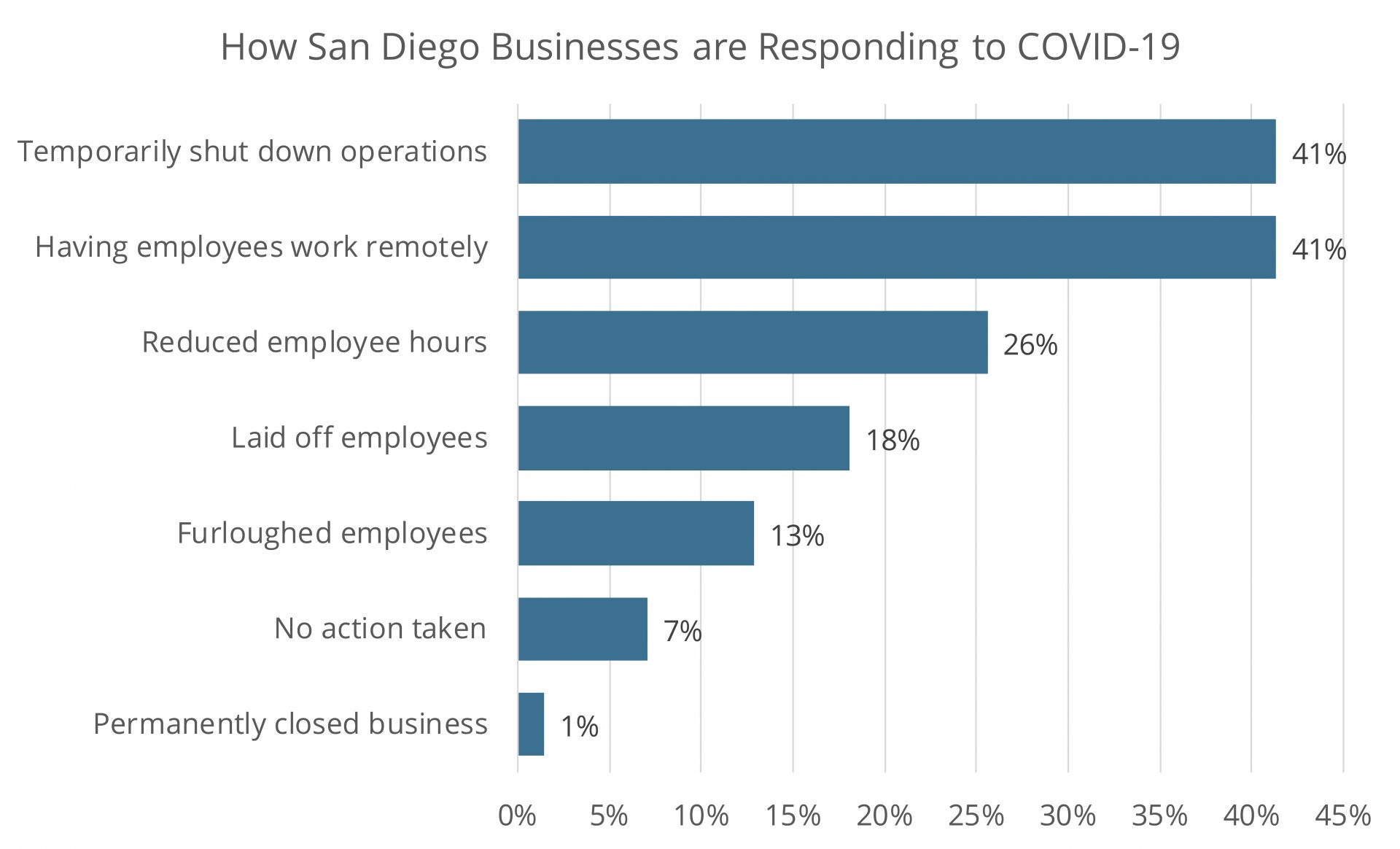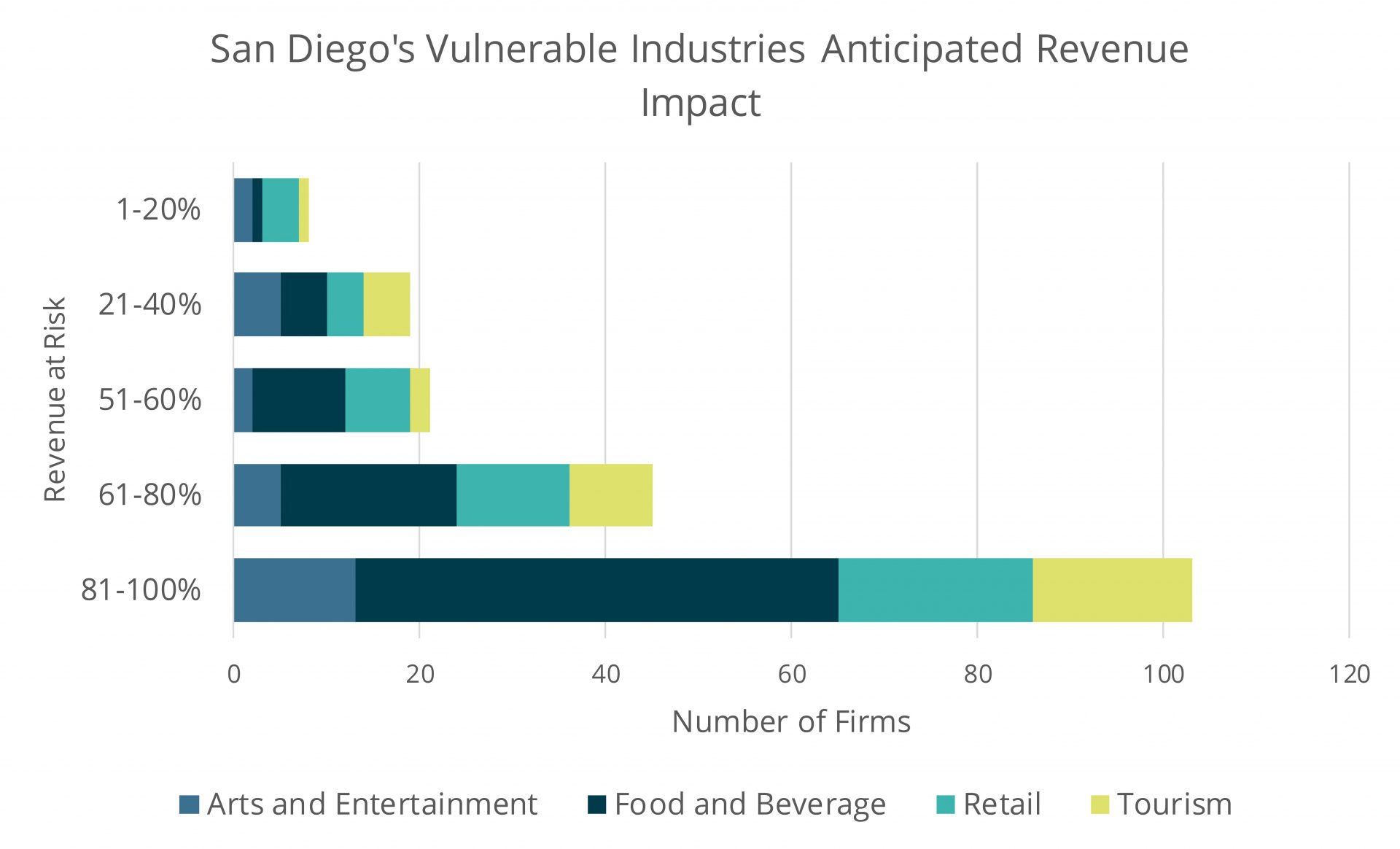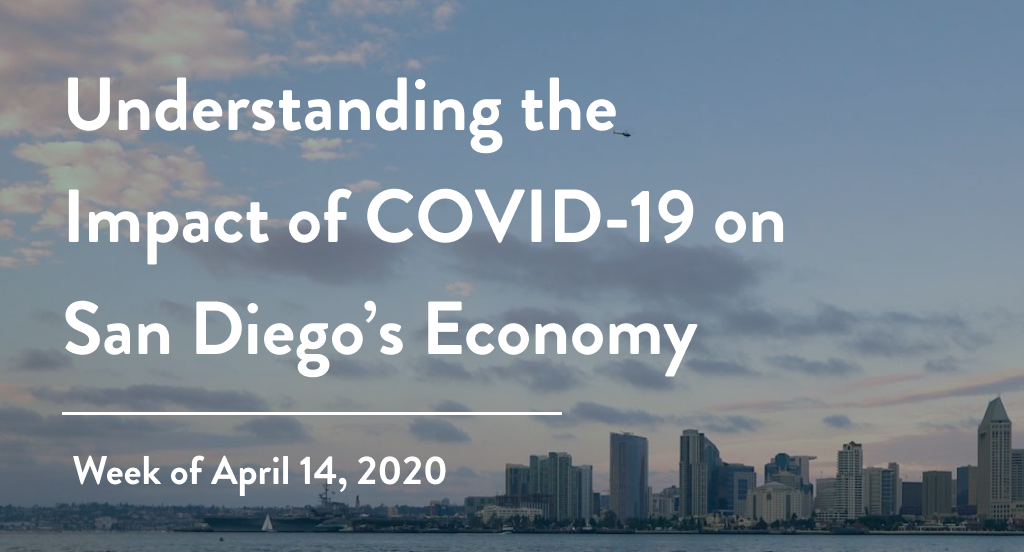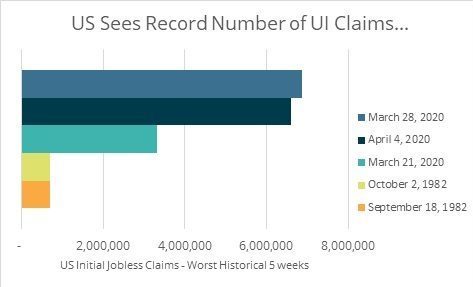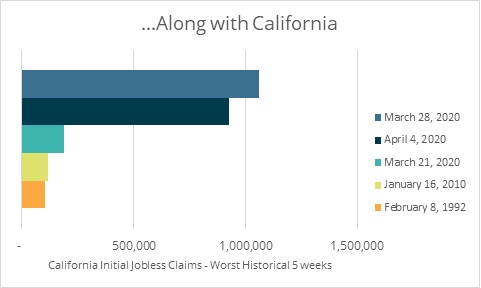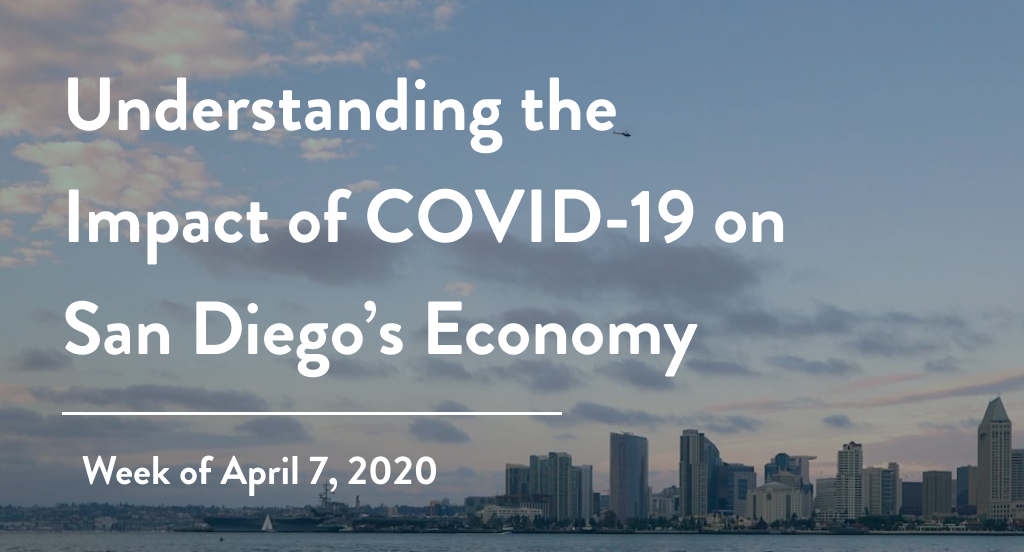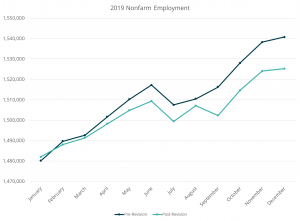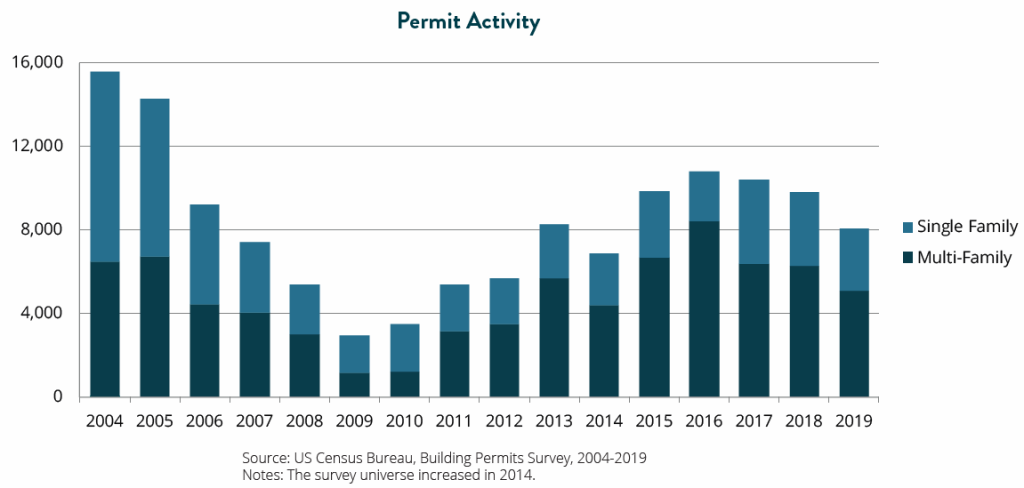We’ve seen and heard the unemployment numbers. But what does all of this really mean for our economic recovery in San Diego? Welcome to the ‘economy in crisis’ series – a bi-weekly breakdown of data at the national, state, and local level in the shadows of Covid-19.
A Record-setting jobs report
Incoming data confirmed what most of us already knew: The U.S. economy lost a record number of jobs in April. The Bureau of Labor Statistics (BLS) reported that the economy shed 20.5 million payroll jobs, lifting the unemployment rate to 14.7%, a rate unseen since the Great Depression. Job losses were spread across every industry, but cuts were especially severe in leisure & hospitality, which gave up some 7.7 million positions.
The BLS data are roughly consistent with payroll processor ADP’s employment report that shows 20.2 million job losses at private companies last month. Similar to the BLS, ADP reported that cuts were heavily concentrated in leisure & hospitality. ADP also measured employment changes across different firm sizes, and showed that companies employing fewer than 50 workers let go of 6 million workers in April.
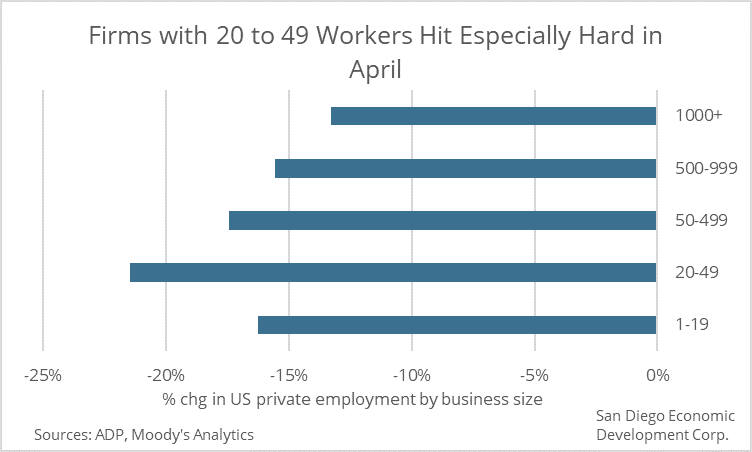
What the U.S. numbers could mean locally
The crater in small business employment across the U.S. last month could portend an especially bad jobs report locally. Businesses with fewer than 50 workers employ 45% of San Diegans, compared with just 29% nationally. Job losses on the scale of the national figure would imply roughly 120,000 fewer payrolls at San Diego small businesses in April alone, roughly the same number of jobs lost across businesses of all sizes between December 2007 and January 2010 during the last recession.
Cutting the data across industries is equally disarming. Accommodation & food service companies employ about one in every 10 local workers. Both the BLS and ADP reports show that hospitality businesses essentially halved their staffs last month; a similar contraction in San Diego would translate to about 85,000 to 90,000 lost jobs. However, San Diego hospitality employment has historically been more sensitive to downturns than nationally, meaning as many as 120,000, or nearly two in three, hospitality workers may have potentially been put out of work.
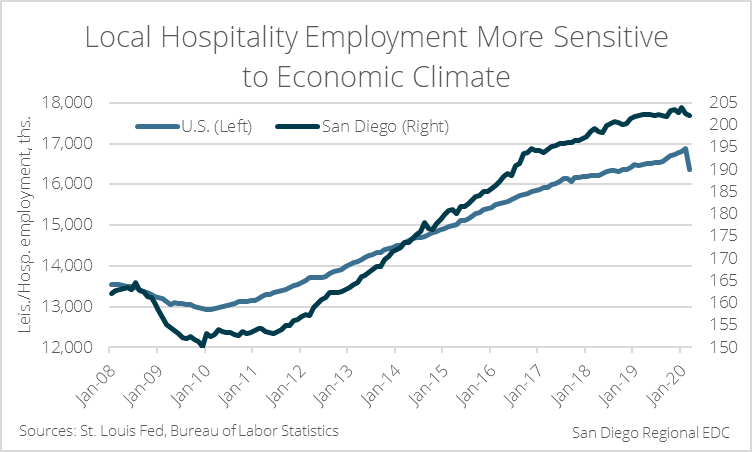
Retail employment is also touchier to fluctuations in the local economy than it is nationally. San Diego retailers may have eliminated more than 25,000 payrolls based on the 2.1 million jobs cut across the U.S. last month.
The damage doesn’t end with hospitality and retail, although losses in other industries are not nearly on the same scale. The BLS reported 980,000 public sector job cuts, and local government, which employs public school teachers, accounted for 801,000 of those. Another industry with a large local footprint—professional and technical services—gave up 520,700 positions nationally. Together, an additional loss of around 15,000 local payrolls from these two sectors could be reasonably estimated based on historical relationships between local and national employment changes.
All in, San Diego is looking at a potential loss of about 230,000 jobs in April if history serves. This would be nearly double the losses suffered during the 2008-2009 crisis and could potentially bring the unemployment rate up to a range as high as 18% to 20%. The official April jobs numbers for San Diego will be reported on Friday, May 22.
Several points bear mentioning: First, the above discussion is only meant to provide a sense of scale around local job market impacts if similar dynamics seen in the national employment report were to play out here. Second, no sector or cluster is immune to downturns. So, while government and professional services haven’t yet experienced losses on the scale of accommodation & food services, there’s always a chance that the effects of COVID-19 could ripple out into these industries. Finally, while it may be encouraging that higher-paying professional and government positions haven’t given as much ground as lower-paying ones, the disproportionate pain experienced by the most vulnerable workers should give us pause.
The coming recovery presents an opportunity to establish career development programs designed to connect lower-paid workers with jobs in industries that are struggling to attract talent. EDC’s Advancing San Diego program – which is currently recruiting local educational providers that develop skilled engineering talent – is helping San Diego inch closer to its goal of producing 20k additional skilled workers per year. Programs like this are a win-win situation that promises a brighter future for thousands of San Diegans and a more resilient economy that could better weather future downturns.
COVID-19 RECOVERY RESOURCES
As a partner of the local San Diego and Imperial Small Business Development Center, EDC is working directly with small businesses – free of charge – to counsel them on accessing COVID-19 recovery resources.
For general COVID-19 recovery resources and information, please view this page.
You also might like:
